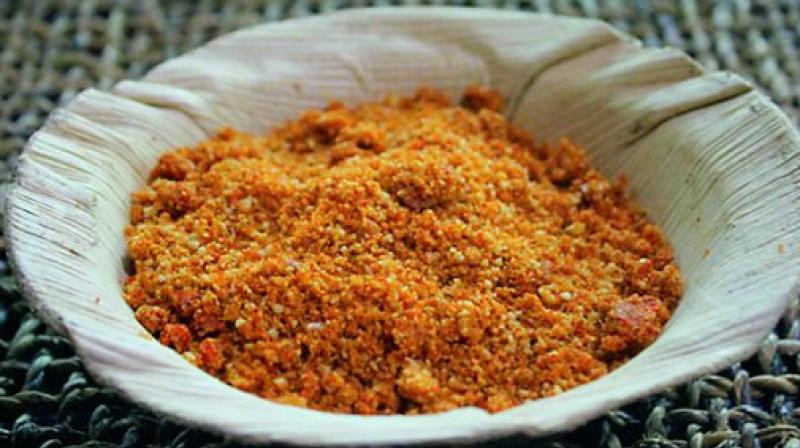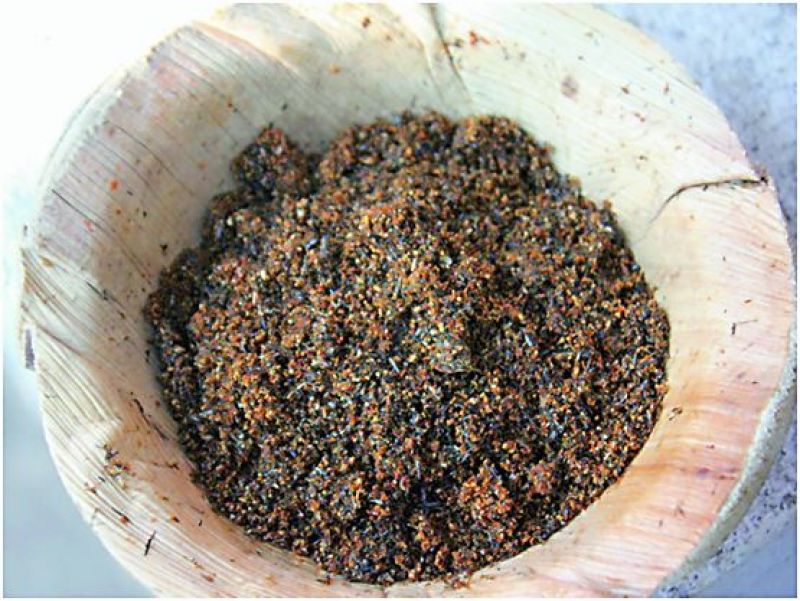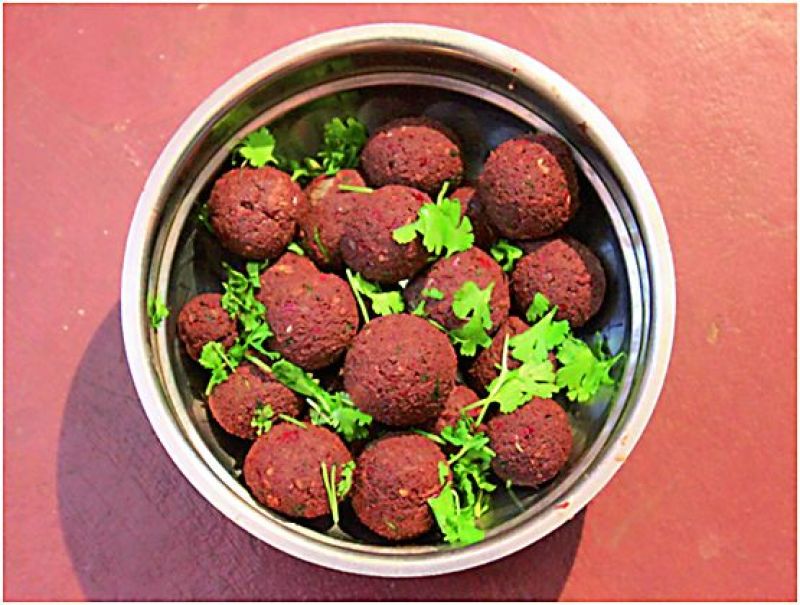Let's PUDI it into practice

The North Karnataka region is famous for its aromatic and delicious dry chutney powders; The most common of them is the popular shenga pudi which is made of ground peanuts, dry red chilli, garlic, salt, a small bit of jaggery and coriander. The other common pudi in this area is the Uchhel Pudi which is also another dry chutney which uses an unusual condiment called Niger seeds. Most communities prefer to eat this pudi with jowhar (sorghum) roti.
Given its rich and fertile soil, this region is also famous for its vegetable-based chutneys, like lady finger, brinjal and green tomato, among others. All eaten with roti or rice and ghee. A vegetable that is native to North Karnataka is the Karchikayi (it’s a relative of the bitter melon plant), which is a small bud, that’s similar in taste to the bitter gourd. It is cooked with onions, spices and pan fried. It can also be eaten with jowhar roti.
The non-vegetarian cuisine in this region is heavily dependent on mutton or goat meat. A few unusual recipes from the Iduga community come to mind; goat offal (spleen/liver) makes a very bold flavoured chutney called Batti chutney, and it is the preferred accompaniment to alcohol.
The Sauvji community is also native to the North of Karnataka, and is famous for its spicy non-vegetarian fare — be it mutton chops, and mutton kheema balls, which are a regular feature in this community’s home-style restaurants, where cooking is mainly done by the women at home, and the service, is by the menfolk. The food from this region is like its terrain — minimalistic, flavourful and healthy.
SHENGAPUDI or DRY GROUNDNUT POWDER
This is a very simple and easy to prepare chutney powder that is used widely in North Karnataka.
Ingredients
100 gm groundnuts
A pinch of coriander leaves
1 tbs byadgi red chilli powder
1 tsp salt
10 garlic cloves
1 small piece jaggery
Method
Roast the groundnuts and peel off the skin.
Add a pinch of fresh coriander leaves, byadgi red chilli powder, salt, garlic cloves and a small piece of jaggery.
Put all the ingredients in a blender/mortar and pestle and make a granular powder.
UCHCHELPUDI/niger seeds powder
It is a very versatile item that is used liberally as an accompaniment in meals
Ingredients
75 gm Uchhel
¼ tsp salt
½ tsp Byadgi chilli powder
10 cloves of garlic

Method
Add the uchhel to a hot pan and dry roast it till its aroma begins to emerge with a slight crackling sound.
Remove it from the flame, and add salt, Byadgi chilli powder and cloves of garlic.
Put all this in a blender and grind to a granular powder.
Goes best with: Chapati, roti, paratha or rice.
BATTI CHUTNEY (GOAT SPLEEN CHUTNEY)
The spleen chutney, mashed in a stone grinder with spices, and made into balls was mostly served as a chakna in local bars. Equivalent to an Indian mutton liver paté, and similar to the French chicken liver pate, it’s taste is meaty and goes well with local tipple.
Ingredients
Spleen, liver and two pieces of mutton
20 Byadgi chillies
20 red chillies
20 cloves garlic
10 cloves
1 bunch coriander
Salt to taste

Method
Wash the spleen, liver and two pieces of mutton.
Cook in a pressure cooker for four whistles with just salt.
Many boil the two mutton items earlier, but the spleen is blackened on a charcoal grill.
The spleen is then pounded on a stone grinder.
Take 20 Byadgi chillies and rock salt to taste, and make a fine powder. Once ready, add other ingredients.
Powder 20 red chillies and 10 cloves, separately.
Take 20 cloves of garlic or one whole bulb and pound separately.
Peel off outer skin of the spleen and pluck off the small bits of the inside to pound it in a grindstone. Remove all stringy membranes and tough skin as it does not grind well.
Add spleen and liver into a grindstone. The key is not to allow it to splatter all over. So it has to be pounded and the wooden pestle should be rolled and twisted a little.
It is tough as the mix is very gummy. Add a little of the drippings of liver to moisten the mix if it gets too dry and gummy. Don’t add any water as it will harden the mixture.
Add the three pounded masala powders, and garlic. Continue to pound and twist the pestle.
Add a handful of freshly chopped coriander.
Add the clove and chilli powder, pounded chilly, salt and garlic paste.
Check for taste before adding everything together. Roll it into small balls.
While rolling the chutney into balls, ensure that the palm is dampened to avoid stickiness.
The advantage of this dish is that it can be left unrefrigerated for three days. It has a great taste, gummy consistency and is spicy.
Goes best with: Drinks, or can be eaten with rice, joladrotti and dalcha (a Hyderabadi stew made from mutton, chana dal and tamarind).
— The writer is a consultant chef and founder of a traditional food restaurant Oota in Benglauru. His insta handle is www.instagram.com/chefmanjit.

